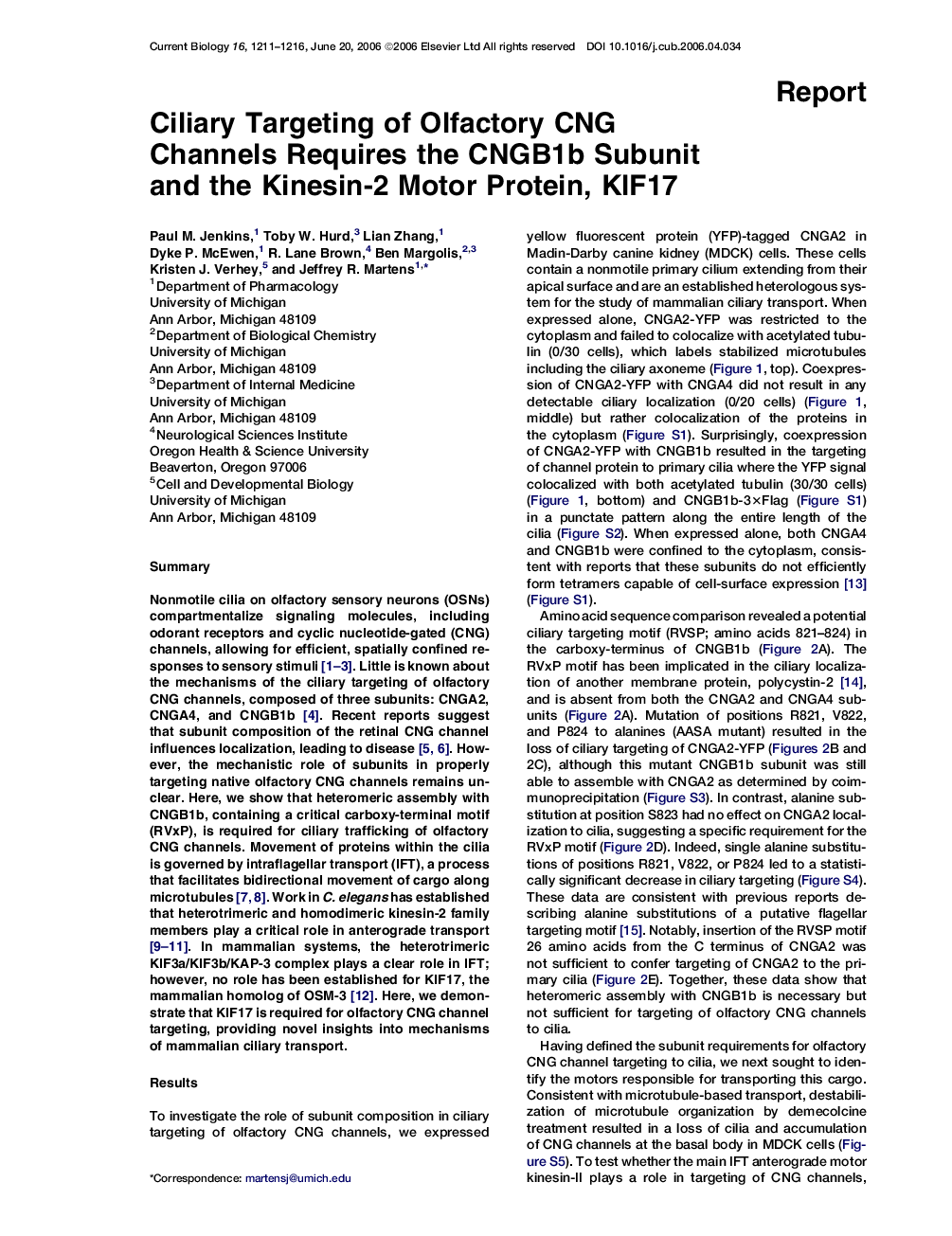| Article ID | Journal | Published Year | Pages | File Type |
|---|---|---|---|---|
| 2045034 | Current Biology | 2006 | 6 Pages |
SummaryNonmotile cilia on olfactory sensory neurons (OSNs) compartmentalize signaling molecules, including odorant receptors and cyclic nucleotide-gated (CNG) channels, allowing for efficient, spatially confined responses to sensory stimuli 1, 2 and 3. Little is known about the mechanisms of the ciliary targeting of olfactory CNG channels, composed of three subunits: CNGA2, CNGA4, and CNGB1b [4]. Recent reports suggest that subunit composition of the retinal CNG channel influences localization, leading to disease 5 and 6. However, the mechanistic role of subunits in properly targeting native olfactory CNG channels remains unclear. Here, we show that heteromeric assembly with CNGB1b, containing a critical carboxy-terminal motif (RVxP), is required for ciliary trafficking of olfactory CNG channels. Movement of proteins within the cilia is governed by intraflagellar transport (IFT), a process that facilitates bidirectional movement of cargo along microtubules 7 and 8. Work in C. elegans has established that heterotrimeric and homodimeric kinesin-2 family members play a critical role in anterograde transport 9, 10 and 11. In mammalian systems, the heterotrimeric KIF3a/KIF3b/KAP-3 complex plays a clear role in IFT; however, no role has been established for KIF17, the mammalian homolog of OSM-3 [12]. Here, we demonstrate that KIF17 is required for olfactory CNG channel targeting, providing novel insights into mechanisms of mammalian ciliary transport.
